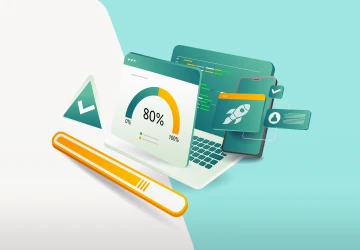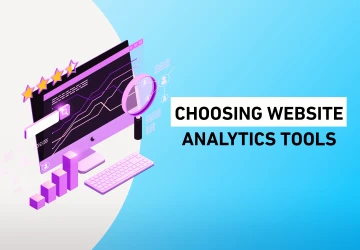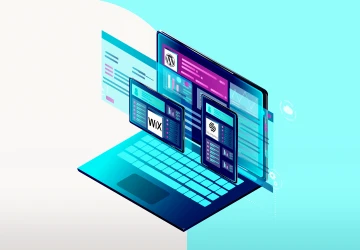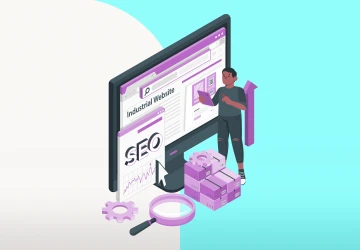How to Use a Website Builder to Create a Website Online
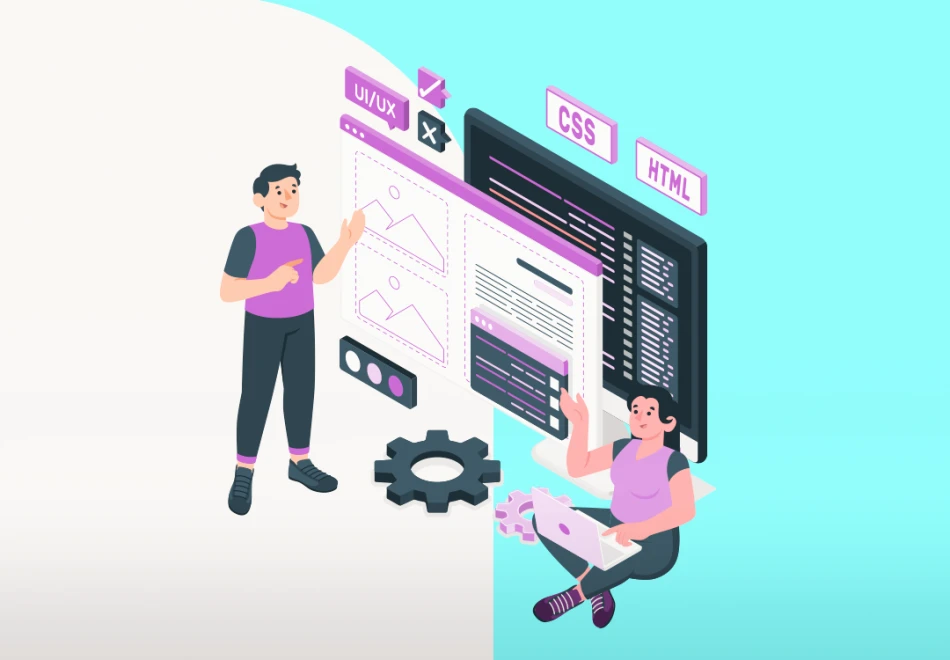
I felt completely overwhelmed when I first tried to figure out how to create a website online.
All the tech talk, coding, and pricey web developers made me want to throw in the towel.
But then, I discovered a website builder that made everything super easy.
By the end of the weekend, I had my very own website—simple, professional, and just what I needed.
If you’re ready to skip the confusion and get your website up and running without the stress, this guide is here to help.
You’ll have your site live before you know it.
 How to Use a Website Builder?
How to Use a Website Builder?
Step 1: Establish Your Website's Purpose
Before jumping in and website development tutorial, it's essential to figure out what it is for.
This helps how to create a website online starts with getting clear on its purpose—this helps guide your decisions about design, layout, and the tools you’ll use.
Take Alweb, for example.
Their main focus is to make website creation easy—you can create a site in just 60 seconds.
They serve all kinds of industries like the construction, medical, and educational sectors.
Whether you want to attract visitors, get leads, or sell products, Alweb has all the tools to make how to create a website online as simple as possible.
Here are some common goals you might have for your website:
For instance, Alweb comes with features that fit different needs:
If your goal is to get traffic, their SEO tools help your site rank better on search engines.
For lead generation, Alweb provides professional email options and integrates smoothly with platforms like Google Analytics, Facebook, and TikTok to track and grow your audience.
If you want to sell products, you can use their payment gateways, which support both manual and international payment methods.
Plus, Alweb offers easy customization so your site matches your brand perfectly.
The control panel is straightforward and doesn’t need any coding skills, which makes website development tutorial stress-free.
If your goal is to showcase your creative work, like photography, Alweb has customizable templates that make it simple to build a beautiful, professional-looking portfolio.
And if you’re all about selling products, they offer features like high-performance hosting and secure payment options to ensure everything runs smoothly.
Features like social media integration, built-in analytics, and responsive design come packed in to make how to create a website online a breeze.
Step 2: Select a Domain Name
Imagine you’re starting an online bakery called “Sweet Treats Haven” which specializes in custom cakes and desserts.
When you're figuring out how to create a website online, choosing the right domain name is one of the first important steps.
Your domain name is like the online address for your business—it’s where people will find you, so you want to make it easy for them.
Something like sweettreatshaven is a great choice because it’s simple, matches your business name, and is easy to remember.
If you already have a business name, it’s usually best to use that name as your domain or something very close.
This is a key part of how to create a website online that makes it easy for your customers to find you.
However, if you’re just getting started, you have more flexibility.
You can choose a domain name that captures your brand and is easy to understand.
Sometimes, finding the perfect domain might even help you decide on your final business name.
Here are some quick tips to help you choose a great domain name, which is a crucial part of how to create a website online:
Make It Easy to Remember: Keep it short and sweet! For example, "tastycakes" is much easier for people to remember than "thebestcustomcakesinnewyork". Simplicity is your best friend when figuring out how to create a website online that’s easy for visitors to find.
Include Your Brand: If possible, use your brand name in the domain. This helps people quickly recognize your business and remember your website, which is an important aspect of learning how to create a website online effectively.
Be Relevant: Adding a keyword related to what you do—like “cakes” or “bakery”—can make your site easier for people (and search engines) to understand. For example, “sweettreatsbakery” could work well if you want to make your focus clear. This tip is especially helpful for improving SEO when figuring out how to create a website online.
If you’re stuck for ideas, there are tools like Domain Wheel or Nameboy that make how to create a website online easier by giving you creative domain ideas based on keywords related to your business.
After you’ve chosen your name, you’ll need to register your domain.
This can be done through services like GoDaddy or Namecheap, and it typically costs up to $20 per year, depending on the domain extension (.com, .net, etc.).
If your business serves a specific area, you could also think about using a country-specific domain extension.
For example, if “Sweet Treats Haven” is based in Canada, sweettreatshaven-ca might be a good choice.
It tells local customers—and search engines—that your bakery is based in Canada.
Plus, your domain isn’t just for your website—it’s great for creating a professional email address too, like info@sweettreatshaven-com.
This makes your business look more professional and trustworthy.
Step 3: Pick a Hosting Provider (If Necessary)
Picking a hosting provider is like renting a space for your website on the internet.
It’s where all your website’s content—like text, images, and videos—lives so people can see it anytime they visit your site.
Your choice of hosting depends on your website’s needs.
For instance, if your site will have lots of images or videos, you’ll want a host that has enough storage and can load your pages quickly.
Some website builders, like Wix, Squarespace, and Alweb, include hosting as part of their service.
This means you don’t need to think about it separately.
But if you use platforms like WordPress-org, Joomla, or Drupal (which are called self-hosted platforms), then you’ll need to choose a hosting provider yourself.
When you’re figuring out how to create a website online and need to choose a hosting provider, there are a few key things to keep in mind:
Reliability: When figuring out how to create a website online, you want your website to be available as much as possible. Look for a host with at least 99.5% uptime—this means your site will almost always be online.
Scalability: If your site starts getting more visitors, your hosting plan should be able to grow with it. Make sure the host offers scalable options to accommodate extra traffic.
Security: Your hosting provider should offer features like firewalls, malware scanning, regular backups, and an SSL certificate (that little padlock in your URL). This helps keep your visitors’ data safe.
Pricing: Ensure the price matches what you’re getting. Compare different plans and features to find the best value.
Here’s a quick look at some popular hosting providers:
Step 4: Choose a Website Builder
The right DIY website builder makes it of how to create a website online—no coding is required.
With the right tool, you could have your site up and running in just a few days, even if you’re not tech-savvy.
Plus, whenever you want to make changes or updates, you can do it yourself without having to hire a programmer.
There are lots of DIY website builders to choose from, but here are some of the best options and what they’re ideal for:
Alweb : It lets you create a unique site in just 60 seconds—no coding or tech experience is needed. It also comes with handy features like professional emails, SEO tools, and advertising integrations, making it great for businesses in sectors like construction, medical, or services.
Wix: Perfect for beginners. It’s an easy-to-use drag-and-drop builder that’s simple and affordable—great if you’re just getting started and want something quick and straightforward.
Squarespace: Ideal if you want to book appointments, showcase a portfolio, or sell services. Squarespace has sleek, beautiful templates that make your site look polished without much effort.
Shopify: The go-to choice for e-commerce. If you’re building an online store to sell products, Shopify makes it easy with built-in tools for payments, inventory, and more.
WordPress-org: If you’re looking to start a blog and need a lot of flexibility, WordPress-org is a solid choice. It offers tons of customization options but can be a bit trickier to use compared to builders like Wix.
If you’re comfortable with coding or willing to hire a developer, you could also build your website from scratch.
This gives you the most control but also comes with more challenges—it takes longer and can be expensive if you need ongoing developer support.
Step 5: Outline Your Site Structure
Your site structure is like a map for your website.
It’s how all your pages are connected, helping visitors easily find what they need.
When your website is organized well, people can navigate it smoothly—and search engines also understand it better, which can improve your visibility online.
To make planning your site structure easier, you can use a tool like Lucidchart, which lets you create a visual sitemap for free.
This helps you see all your pages and how they fit together.
Here’s an example of what a simple site structure could look like:
Homepage
├── About Us
├── Services
│ ├── Service A
│ └── Service B
├── Blog
└── Contact Us
Here are a few easy steps to help you outline your site:
Start with the Main Pages: Think about the core pages you want on your site. Usually, these include a Homepage, About Us, Services or Products, Contacts, and maybe a Blog. These are the main areas visitors are likely to click on first.
Put Yourself in the Visitor’s Shoes: Imagine you’re someone visiting your website for the first time. What would you be looking for? Ensure that your key services or information are easy to find. For example, if you offer different services, have a clear section for each one right in the main navigation.
Group Related Pages: Organize your pages into categories that make sense. For instance, if you’re a photographer, you might have a main section called Portfolio with subcategories like Weddings, Portraits, and Events. This way, visitors can quickly find the specific type of work they’re interested in.

Step 6: Design the Look and Feel of Your Website
Now that you’ve got your site structure ready, it’s time to bring your vision to life with design.
This is where your website starts to get its personality of how to create a website online—something that matches your brand and connects with your visitors.
Pick a Theme or Template
A theme or template is a ready-made design for your website, and it makes things easy.
You don’t need any technical or design skills to use one.
Most DIY website builders like Wix and Alweb offer a variety of templates that you can tweak to fit your style.
These templates often come with specific layouts—like portfolios, blogs, or contact forms—so you can get started right away.
If you’re using WordPress-org, you’ll need an external theme.
You can also use a tool like Elementor to make things easier.
Elementor has a drag-and-drop builder, which means you can design your site by just dragging elements around—no coding is required.
Here’s how to create a website online:
Open the template library in your DIY website builder.
Filter the templates by your industry. For example, if you’re creating a travel website, type “travel” into the search bar, and you’ll see options designed for that type of site.
Find a template you like and click on it to preview how it looks.
If it fits your vision, click “Insert” to add it to your website, then start customizing it. You can click on any text or images and change them to fit your brand.
Choose Colors
Next, pick the color palette for your site.
Colors are important because they can create emotions and set the mood for your brand:
Warm colors like brown and orange work great for bakeries or coffee shops because they feel cozy and inviting.
Green is perfect for anything related to organic products or environmental topics since it’s associated with nature, health, and growth.
Blue is often used by financial advisors because it represents trust, stability, and professionalism.
Once you have an idea of your main color, you can use free tools like Adobe Color to create a full palette for your site.
You can even upload a photo of your product to extract colors that match perfectly.
Choose Fonts
Fonts are just as important as colors—they help set the tone for your website and make it easy to read.
You can use different fonts for different parts of your site:
Choose one font for headlines to help them stand out.
Use a different, simple font for body text to keep it easy to read.
Try to stick to two or three fonts so everything looks consistent and neat.
Also, ensure your fonts are easy to read on all types of devices, from desktops to mobile phones.
Set Your Logo and Favicon
Your logo is a big part of your brand—it’s often the first thing people notice and remember about your business.
If you don’t have a logo yet, you can create one using tools like Canva or hire a designer to help.
Once you’ve got your logo, add it to your website’s header so it appears at the top of every page.
And don’t forget to set a favicon too!
This is the tiny icon that shows up on browser tabs when someone visits your site.
It might be a simple version of your logo or a small graphic that represents your brand.
For example, if you run a bakery, you could use a tiny croissant as your favicon.
It’s a small detail, but it adds a professional touch and helps people recognize your site easily.
Step 7: Set Up Key Pages
Now that you’ve planned out your site, it’s time to put together the key pages.
These pages are the foundation of your website—they help share important information, guide your visitors, and build trust with them.
The exact pages you need will depend on your website’s goals, but here are the must-haves to get you started.
Essential Pages for Every Website
No matter what kind of website you’re building, these basic pages are a must:
Homepage: This is like your storefront. It’s usually the first thing visitors see, so it should show off your brand and main offerings clearly and right away.
About Page: This is where you connect with your audience. Share your story, your values, and what you’re all about. Let visitors know who’s behind the brand—it makes you more relatable.
Contact Page: Make it easy for people to reach out to you. Include your contact info—like phone number, email, or address—and add a simple contact form so people can get in touch easily.
Privacy Policy: This page is all about transparency. It lets visitors know how you handle their information and helps build trust. It might seem a bit boring, but it’s important to have.
Extra Pages for a Blog
If you plan to have a blog on your site (which is great for connecting with your audience), you’ll want to add these pages:
Blog Library: This is the hub for all your blog posts. Organize them by topic or date so visitors can easily find what they’re interested in.
Individual Blog Posts: Each blog post should have its page. This makes it easier to read and share, and it also helps with SEO (search engine optimization), making your content easier to find online.
Extra Pages for an Online Store
If you’re building an online store, here are some additional pages you’ll need:
Product Pages: These are where you showcase each product. Add details, images, prices, and reviews to help people make informed decisions.
Collections: Group your products into categories like "Men's Clothing," "Sale Items," etc. This helps customers find what they’re looking for quickly.
Sizing Page: If you’re selling clothing, add a sizing guide to help customers pick the right size.
Shipping and Returns: Let people know about shipping details and return policies. It helps avoid surprises and makes customers feel more confident about buying.
Extra Pages for a Portfolio
If you’re building a portfolio website to showcase your work, consider these pages:
Project Gallery: This is a visual collection of your best work. Think of it as your highlight reel, showing off what you do best.
Individual Project Pages: Create more detailed pages for specific projects. Highlight what you did, how you did it, and the results. It gives potential clients a better understanding of your process and expertise.
Testimonials: Include quotes from happy clients. Testimonials are powerful for building credibility and showing potential clients that others trust and value your work.
Step 8: Develop Content That Resonates with Your Audience
In the digital world, your audience is everything.
If you want your website to succeed, your content needs to speak directly to them.
It’s about knowing what they want—what questions are they asking, what problems do they need help with, and what are they searching for?
Once you understand that, you can create content that meets those needs perfectly.
Brainstorm Audience Questions
To make content that hits home, you need to think like your audience.
What are their most pressing questions? What problems can you solve for them?
Here’s how to dig into these questions:
Customer Feedback: Start with the questions your customers are already asking. This could be through in-person conversations, phone calls, emails, or comments on social media. These direct interactions give you a clear view of what they need.
Social Listening: Tune into the conversations online in your industry. Platforms like Instagram, TikTok, Facebook, X (Twitter), or forums like Reddit and Quora are full of people asking questions. Pay attention to what keeps coming up.
Topic Research Tools: Use tools like Google Trends, the “People Also Ask” section on Google, or sites like Answer the Public and Exploding Topics to see what people are curious about.
Competitor Research: See what competitors are talking about. Look at their blogs, FAQs, and other content. If they’re answering certain questions, chances are your audience has similar questions. Add your unique spin when covering those topics.
Internal Brainstorming: Gather your team and brainstorm. Think about what your audience would like to know and how you can best help them.
Once you have your list of questions, start answering them.
This could be through blog posts, videos, or even a FAQ section on your website.
Do Keyword Research
Keywords are what people type into search engines when they’re looking for answers.
Doing keyword research helps you find the exact words and phrases your audience uses to search, which can help more people find your site.
This is key for SEO (search engine optimization)—how you get free, organic traffic from search engines.
Here’s a simple way to start using tools like Semrush’s Keyword Magic:
Think of a broad keyword that describes your business. This is your seed keyword. For example, if you sell organic food, your seed keyword could be "organic food."
Enter that keyword into the Semrush Keyword Magic Tool. Pick your target region and hit “Search.”
You’ll get a list of related search terms. Take note of the most relevant ones and save them in a spreadsheet.
Once you have your list, start using these keywords naturally throughout your website—on your homepage, about page, product descriptions, blog posts, and more. Just remember to sprinkle them in naturally so your content remains helpful and easy to read.
Step 9: Optimize for Search Engines (SEO)
SEO, or Search Engine Optimization, is about helping search engines like Google find, understand, and rank your website.
The better your SEO, the more likely it is that people searching for what you offer will find your site.
Even if your website is brand new, taking a few basic SEO steps right now can lay a solid foundation for higher rankings in the future.
Plus, doing SEO as you go will save you a lot of work down the line.
Do On-Page SEO
On-page SEO means optimizing individual pages of your website to help search engines understand what each page is about, so they rank it higher when someone searches for relevant information.
Higher rankings mean more organic traffic—people finding your site naturally through search engines.
On-page SEO involves several key elements.
Let’s take a closer look at each one:
1. Meta Titles
The meta title is the blue clickable headline you see in search results.
It’s the first thing people notice, so it plays a big role in whether someone clicks on your link or skips it.
Here’s how to make sure your meta titles are effective:
Keep It Concise: Your title should be between 50-60 characters. That’s long enough to tell people what your page is about but short enough that it doesn’t get cut off in the search results.
Include Your Main Keyword: Adding your main keyword tells search engines what the page is about, making it more likely to rank well for that topic.
Make It Descriptive: A good meta title should address the user's question or need. For example, if you’re writing a guide for SEO beginners, your title might be “SEO for Beginners: A Step-by-Step Guide”.
2. Meta Descriptions
The meta description is the summary that appears just below the meta title in search results.
It’s a chance to give people a little more information about your page before they decide to click.
Here are some tips for writing a strong meta description:
Summarize Your Page Clearly: Your meta description should explain what the page is about in a few sentences. It’s your opportunity to give searchers a reason to choose your link over others.
Include Keywords: Try to work with relevant keywords, but keep it natural. It should read smoothly for anyone browsing through the results.
Keep It Short: Stick to 155-160 characters so that your description doesn’t get cut off. A concise, clear summary is more likely to grab someone’s attention and get them to click.
3. Internal Linking
Internal links are links that connect one page on your website to another.
These links help search engines understand the structure of your site and how your pages relate to each other.
Plus, they help guide your visitors to other useful content, which keeps them on your site longer.
Here’s how to do internal linking right:
Use Descriptive Anchor Text: The anchor text is the clickable part of the link. Instead of using something generic like “click here”, use descriptive phrases like “learn more about our services”.
Link to Relevant Pages: Ensure the pages you link to are relevant to the content. Don’t link just for the sake of linking—only connect pages when it adds value.
Sprinkle Links Naturally: Avoid adding too many internal links on a single page. Spread them out naturally throughout the content, so it feels helpful and not overwhelming.
4. Image SEO
Image SEO is all about making your images more visible in Google Images and ensuring they load fast so they don’t slow down your website.
Here’s how you can easily optimize your images:
Use Descriptive File Names: Rename your images with something that describes what's in the picture. For example, instead of leaving the default name like “IMG001,” call it something like “blueberry-pancakes.”
Add Alt Text: Alt text is a short description of the image. It helps people who use screen readers (like those who are visually impaired) and gives search engines more context about the image.
Compress Image Sizes: Big images can slow your website down, which isn't great for your visitors or SEO. Use tools like Image Resizer to make the files smaller without losing quality.
Submit a Sitemap to Google Search Console
A sitemap is just a file that lists all the pages on your website—it’s like a map for search engines.
It helps search engines, like Google, easily find all your pages, which means they can show them in search results faster.
Remember when you made that visual sitemap back in Step 5?
Now that your site is live, it’s time to submit it to GSC:
WordPress-org Websites: If you’re using WordPress, install the Yoast SEO plugin. This plugin will create a sitemap for you automatically. Just note, that you’ll still need to upload it to GSC manually—it’s an easy step but one you have to do yourself.
Alweb, Wix, and Other Site Builders: Most website builders, like Shopify or Wix, will automatically generate a sitemap for you. All you need to do is submit it to GSC once, and they’ll keep everything updated.
Step 10: Test and Launch Your Website
Before you launch your website, it's important to give it a good test run to ensure everything works smoothly and to catch any issues before your visitors do.
Here’s what you should look out for:
Functionality: Click on every link and button to ensure they all work the way they’re supposed to and take you to the right pages. Think of it as taking your website for a test drive.
Proofreading: Read through all your content carefully to spot any typos or grammar mistakes. It’s easy to overlook small errors, so tools like Grammarly can help make sure everything looks professional.
Device Compatibility: Open your site on different devices—like your desktop, laptop, smartphone, and tablet. You want to be sure it looks good and works well no matter what kind of screen people are using.
Speed: Nobody likes a slow website, and neither does Google. Use a tool like Google PageSpeed Insights to check how fast your pages load. A slow site can frustrate your visitors and even hurt your ranking in search results, so ensure everything is quick and snappy.
Once you’ve tested everything and it all looks good, go ahead and hit that publish button!
You’re ready to share your site with the world.
Step 11: Promote and Maintain Your Website
A website is a lot like a work of art—it’s never truly "finished."
It’s always changing, needing a little love and attention to keep it running well and helping you reach your goals.
The good news is, that using a website builder like Alweb makes it easy to update your site whenever you need to.
You can tweak things in real time, which means your content is always up-to-date, and your website stays relevant and effective.
Websites can get outdated fast, whether it's the design, the keywords you're targeting, or your SEO strategy.
To keep your site fresh, it’s important to add new content regularly and update old pages.
If you notice your sales slowing down or your site metrics—like bounce rate—getting worse, it could be time for a refresh.
This could mean writing a new blog post, updating your product descriptions, or adjusting your site's layout to make it easier for visitors to navigate.
Another important part of keeping your website in good shape is analyzing how it's performing.
Alweb has built-in analytics tools that help you see exactly how people are interacting with your site.
You can find out which pages are popular, where visitors are dropping off, and what’s working well.
Security is a big deal too.
You need to protect your website from hackers and malware, and Alweb makes that easy.
It has strong security features like encryption and real-time monitoring to help keep your data and your customer's data safe.
Regular backups are also a must.
Alweb automatically saves previous versions of your site every time you make a change, so if something goes wrong, you can easily restore an earlier version.
You can also create manual backups for an extra layer of security.
Once your website is ready, it’s time to promote it.
Just building a great site isn’t enough—you need people to find it.
Social media is a fantastic way to get the word out.
Share your content on platforms where your audience hangs out.
For example, if you’re active on Instagram, converting a carousel post into a Reel can help you get more attention.
Alweb makes it easy to connect with social media platforms like Facebook, TikTok, and Google, so you can promote your site seamlessly.
Email marketing is another powerful way to keep your customers engaged.
With Alweb, you can easily send out newsletters, announce new products, or share exciting updates.
This keeps your audience interested and encourages them to come back to your site. Blogging is also a great way to bring in more visitors.
If you need quicker results, consider using ads to drive traffic.
Unlike SEO, which takes time, ads through Google or social media can bring immediate visitors to your site.
Alweb makes it easy to run and track these campaigns, whether you’re using Google Ads to bring in new traffic or social media ads to re-engage past visitors.
FAQs
How to Build a Website Step-by-Step?
Learn how to create a website online by defining its purpose, choosing a domain, hosting, and using a website builder.
Customize your site, optimize content, test for functionality, and launch it for the world to see.
How to Use Website Builder?
Discover how to create a website online by selecting a builder, choosing a template, and customizing it with your branding.
Publish your site easily with tools for SEO, e-commerce, and analytics for real-time updates.
What Are the 7 Steps in Creating a Website?
The process of how to create a website online involves defining a purpose, choosing a domain, picking hosting, and using a builder.
Then, plan the structure, design pages, and finally launch your professional site.
How Does a Website Work Step by Step?
Understanding how to create a website online includes knowing that a domain connects users to hosting servers storing your content.
The browser retrieves and displays your site, allowing seamless user interaction.
Last Words
So, we’ve covered all the basics of how to create a website online—from planning and picking the right builder to launching and promoting it.
My main tip? Always put yourself in your visitors' shoes.
Keep things simple, make sure your site loads quickly, and make it easy to navigate.
Your website isn’t just an online space; it’s your brand’s home.
Keep it updated, easy to use, and ready to grow with you.
Got any questions? Just ask—we’re here to help you every step of the way.

